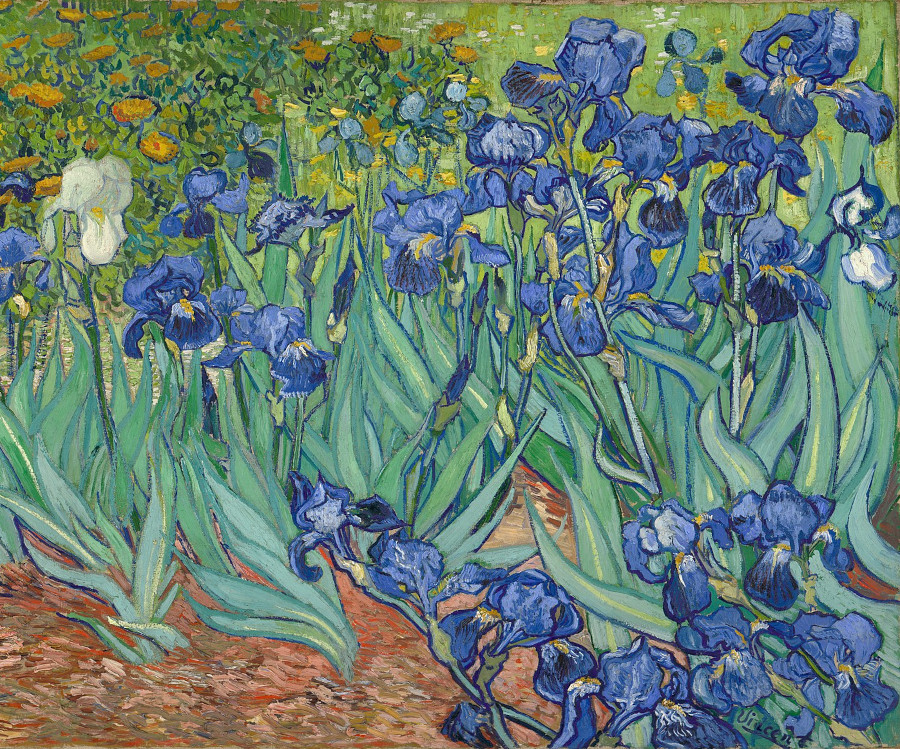Vincent van Gogh? Sarah Harding? Anonymous? Apocryphal?

Question for Quote Investigator: Conforming to social norms is much easier than following a divergent, colorful, and eccentric pathway through life. This notion has been expressed as follows:
Normality is a paved road; it’s comfortable to walk, but no flowers grow on it.
The famous Dutch painter Vincent Van Gogh has received credit for this statement, but I have become skeptical because I have never seen a solid citation. Would you please explore his topic?
Reply from Quote Investigator: The website of the Van Gogh Museum of Amsterdam has an extensive database of letters from Vincent Van Gogh with English translations. QI performed many search queries on this database and was unable to locate a match for the quotation within the database.
Van Gogh died in 1890, and the earliest match known to QI appeared in a 2009 exhibition catalog titled “Vincent Van Gogh: Between Earth and Heaven: The Landscapes” from the Kunstmuseum Basel in Switzerland. Boldface added to excerpts by QI:1
“Normality is a well-paved street; it is good for walking—but no flowers will grow there.”
Vincent van Gogh
The quotation occurred on the front flap of the dust jacket. It did not appear in the main body of the book. Unfortunately, no citation was provided. At present, QI would not ascribe this statement to Vincent van Gogh because this evidence is too weak. The creator remains anonymous. Perhaps a future researcher will uncover a superior citation.
Below are additional selected citations in chronological order.
The 2009 book was simultaneously published in German as “Vincent Van Gogh: Zwischen Erde und Himmel: Die Landschaften”2 and in French as “Vincent van Gogh: Entre Terre et Ciel: Les Paysages”.3 Here are German and French versions of the quotation attributed to Van Gogh:
Die Normalität ist eine gepflasterte Straße, man kann gut darauf gehen — doch es wachsen keine Blumen auf ihr.
La normalité est une route pavée : on y marche aisément mais les fleurs n’y poussent pas.
In 2014 “The Independent” of London published an article about typography and mentioned that the quotation appeared in a message using the typeface Brain Flower:4
. . . a cloying picture message of the sort so frequently now shared on Instagram. “Normality is a paved road,” offered Sarah Harding of Girls Aloud fame. “It’s comfortable to walk, but no flowers grow on it.”
In 2017 a columnist of the “Birmingham News” in Alabama wrote this:5
As Vincent van Gogh apparently said, “Normality is a paved road. It’s comfortable to walk, but no flowers grow on it.”
In 2018 the saying appeared in “The Week” of Bath, England within a collection of miscellaneous sayings under the title “Wit & Wisdom”:6
“Normality is a paved road; it’s comfortable to walk, but no flowers grow on it.”
Vincent van Gogh, quoted on EliteDaily.com
In conclusion, the earliest citation for this quotation known to QI appeared in 2009. Vincent Van Gogh received credit, but he died in the nineteenth century. Hence, this evidence is inadequate to support the ascription to Van Gogh. The creator remains unknown. QI hopes future researchers will discover more evidence to resolve the uncertainty.
Image Notes: Public domain image of “Irises” by Vincent van Gogh circa 1898. Image has been cropped and resized.
Acknowledgements: Great thanks to Zero Dean, Sonneta, Jaco Artist, Randy Wagner, Simon de Swardt, and Craig Good whose inquiries led QI to formulate this question and perform this exploration. Many thanks to Nina Gilbert, Jeanne Schramm, and Dan Bye for their insightful discussion of this topic on the Project Wombat mailing list.
Special thanks to Dan Bye who accessed “Vincent Van Gogh: Between Earth and Heaven: The Landscapes”. Bye located the quotation on the front flap. He also examined the rest of the book and found that the quotation was absent from the main text. Additional thanks to Jane Bella who independently searched the database of letters at the Van Gogh Museum website and found no matches.
Update History: On April 11, 2024 the format of the bibliographical notes was updated. Also, the full article was placed on this website.
- 2009, Vincent Van Gogh: Between Earth and Heaven: The Landscapes, Exhibition Catalog from Kunstmuseum Basel in Basel, Switzerland, With contributions by Carel Blotkamp, Gottfried Boehm, Bernhard Mendes Bürgi, Laura Coyle, Walter Feilchenfeldt, Seraina Werthemann, and Nina Zimmer, Quotation appears on front flap of dustjacket, Hatje Cantz Verlag, Ostfildern, Germany. (Verified with scans; thanks to Dan J. Bye) ↩︎
- 2009, Vincent Van Gogh: Zwischen Erde und Himmel: Die Landschaften, Exhibition Catalog from Kunstmuseum Basel in Basel, Switzerland, With contributions by Carel Blotkamp, Gottfried Boehm, Bernhard Mendes Bürgi, Laura Coyle, Walter Feilchenfeldt, Seraina Werthemann, and Nina Zimmer, Quotation appears on front flap of dustjacket, Hatje Cantz Verlag, Ostfildern, Germany. (Verified with picture of quotation on flap from Ebay) ↩︎
- 2009, Vincent van Gogh: Entre Terre et Ciel: Les Paysages, Exhibition Catalog from Kunstmuseum Basel in Basel, Switzerland, With contributions by Carel Blotkamp, Gottfried Boehm, Bernhard Mendes Bürgi, Laura Coyle, Walter Feilchenfeldt, Seraina Werthemann, and Nina Zimmer, Quotation appears on front flap of dustjacket, Hatje Cantz Verlag, Ostfildern, Germany. (Verified with picture of quotation on flap from Ebay) ↩︎
- 2014 December 5, The Independent, Type Cast by Simon Usborne, Quote Page 44, London, England. (ProQuest) ↩︎
- 2017 February 20, Birmingham News: Web Edition, Section: Opinion, A cycling trip through Kerala, India By Rabbi Dana Evan Kaplan (Guest Voices), No Page Number Specified, Birmingham, Alabama. (NewsBank Access World News) ↩︎
- 2018 March 3, The Week, Wit & Wisdom, Quote Page 25, Bath, England. (ProQuest) ↩︎